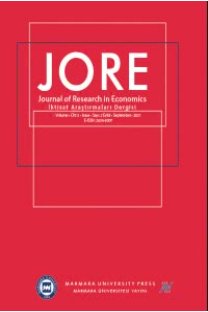THE UNEXPECTED SHORTFALL: AN ALTERNATIVE RISK MEASURE
THE UNEXPECTED SHORTFALL: AN ALTERNATIVE RISK MEASURE
The international prudential regulation standard – the Basel standards – introduces a substantial
change to its market risk framework. The change is part of a comprehensive revision of the standard
to address the weaknesses discovered during the global financial crisis (GFC) of 2008. One of the key
changes is the replacement of Value-at-Risk (VaR) with Expected Shortfall (ES) as the primary risk
measure in the framework. By incorporating the tail events, ES partially answers the concerns raised
about the VaR during the GFC. However, ES as well lacks a mechanism to extrapolate the historical
shocks. This paper proposes an alternative measure – unexpected shortfall (US) – which aims to serve
as a better safety barrier for financial institutions. Based on the evidence from 3 conventional currency
pairs (EUR/USD, USD/TRY, EUR/TRY) and 1 cryptocurrency pair (BTC/USD), the new measure
displayed violations in a reasonably close range of the expected values and backtest analyses suggested
that the incurred excessive losses for US are less than both VaR and ES.
Keywords:
Market Risk, Capital Adequacy, Value at Risk, Expected Shortfall, Basel IV FRTB,
___
- Barone-Adesi, G., Giannopoulos, K., & Vosper, L. (1999). VaR without correlations for portfolios of derivative securities. Journal of Futures Markets, 583-602.
- Basel Committee on Banking Supervision. (1996). Amendment to the capital accord to incorporate market risks. Bank for International Settlements.
- Basel Committee on Banking Supervision. (2016). Minimum capital requirements for market risk. Bank for International Settlements.
- Bollerslev, T. (1986). Generalized autoregressive conditional heteroscedasticity. Journal of Econometrics, 121-131.
- Boudoukh, J., Richardson, M., & Whitelaw, R. (1998). The best of both worlds. Risk, 64-67.
- Christoffersen, P. F. (1998). Evaluating interval forecasts. International economic review, 841-862.
- Glasserman, P. (2004). Monte Carlo methods in financial engineering. New York: Springer
- Gordy, M. B. (2002). Saddlepoint approximation of CreditRisk+. Journal of banking & finance, 26(7), 1335- 1353.
- Hull, J., & White, A. (1998). Incorporating Volatility Updating Into The Historical Simulation Method for Value At Risk. Journal of Risk, 5-19.
- J.P. Morgan. (1996). RiskMetrics – Technical Document (4th Edition).
- Kleiber, C., & Kotz, S. (2003). Statistical size distributions in economics and actuarial sciences. John Wiley & Sons.
- Kupiec, P. (1995). Techniques for Verifying the Accuracy of Risk Measurement Models. The Journal of Derivatives, 3(2).
- Taleb, N. (2009). The Black Swan. Random House.
- Zenti, R., & Pallotta, M. (2000). Risk analysis for asset managers: Historical simulation, the bootstrap approach and value at risk calculation. Available at SSRN 251669.
- ISSN: 2636-8307
- Başlangıç: 2016
- Yayıncı: Marmara Üniversitesi
